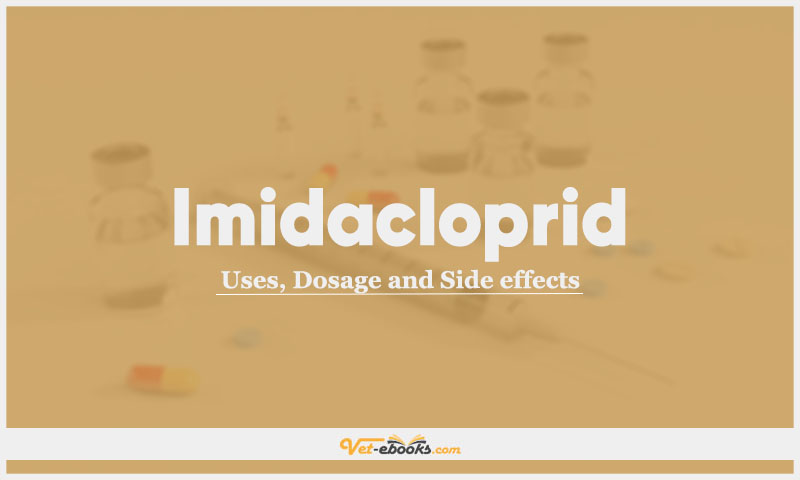Imidacloprid: Uses, Dosage and Side Effects

Overview
- Binds to post-synaptic nicotinic receptors resulting in paralysis and death of fleas and their larvae.
Uses of Imidacloprid
• Treatment and prevention of flea infestations in dogs and cats.
Dose of Imidacloprid in Dogs and Cats
Dogs:
- Fleas and ticks: 10 mg/kg topically every month.
- In dogs >40 kg the appropriate combination of pipettes should be applied.
- Collars should be replaced every 8 months.
Cats:
- Fleas: 10–20 mg/kg topically every month.
- Collars should be replaced every 8 months.
Drug Dosage Calculator
You Should Give:
Side Effects of Imidacloprid in Dogs and Cats
- There may be transient itching and erythema at the site of application.
- Diazepam should be administered if the combined product with flumethrin is accidentally consumed.
- If swallowed, the spot-on product has a harsh taste and may cause salivation.
- It is possible to have transient drowsiness, irritability, and inappetence.
Contraindications of Imidacloprid in Dogs and Cats
- Do not use in unweaned puppies and kittens <8 weeks.
- The flumethrin-impregnated collar is not recommended in pregnancy and lactation and should not be used in kittens <10 weeks of age or puppies <7 weeks of age.
- Do not use the permethrin-containing product on cats.
- Moxidectin/imadocloprid is not for kittens <9 weeks, <1kg, and puppies <7 weeks.
Some Notes:
- For the treatment of flea infestations, the additional use of an approved insect growth regulator is recommended and the product should be applied every 4 weeks to all in-contact cats and dogs.
- May be used in nursing bitches and queens.
- The combined product with flumethrin or moxidectin has additional preventative and treatment indications.
Tip
Do You Want To Increase Your Veterinary Knowledge and Practical Skills?
You Can Now Browse and Download +3000 Books For Veterinary Professionals & Students Online.
Download Veterinary Books




















